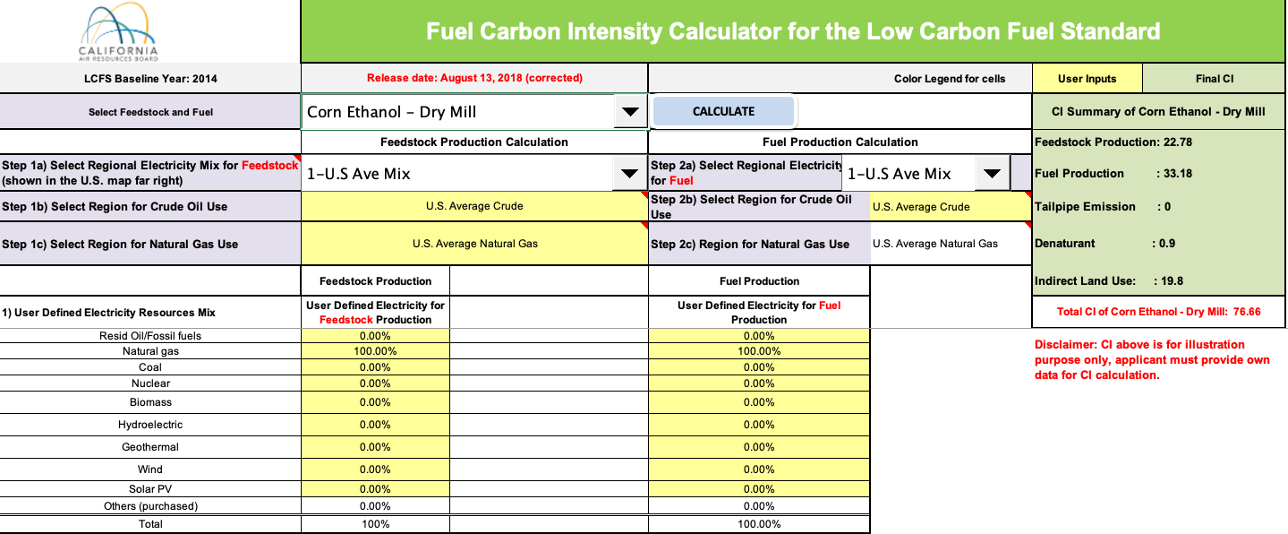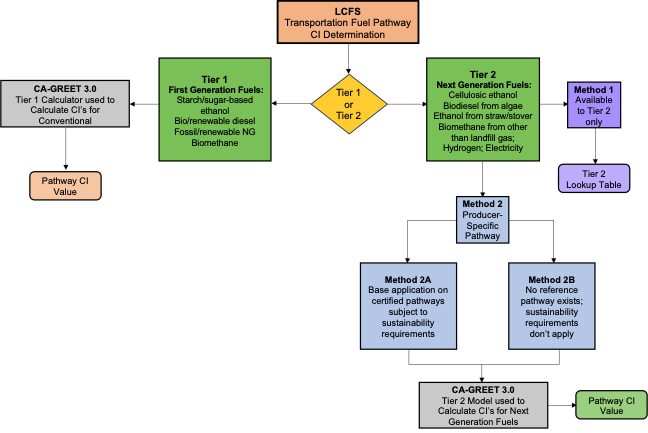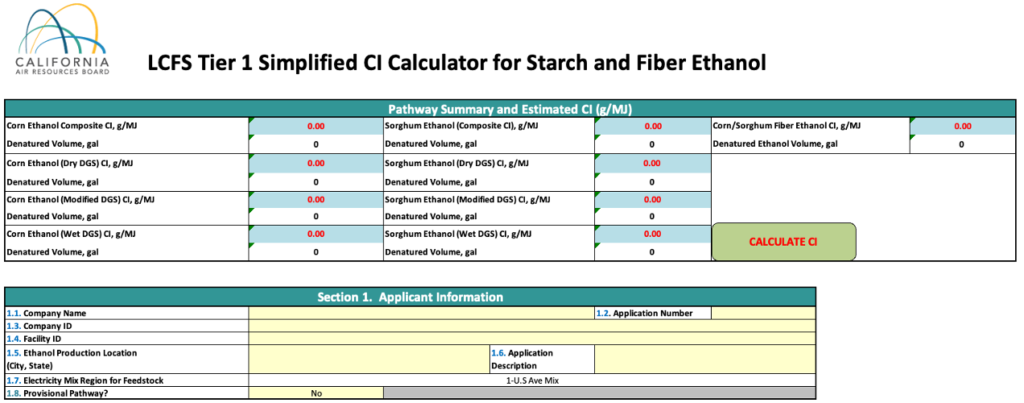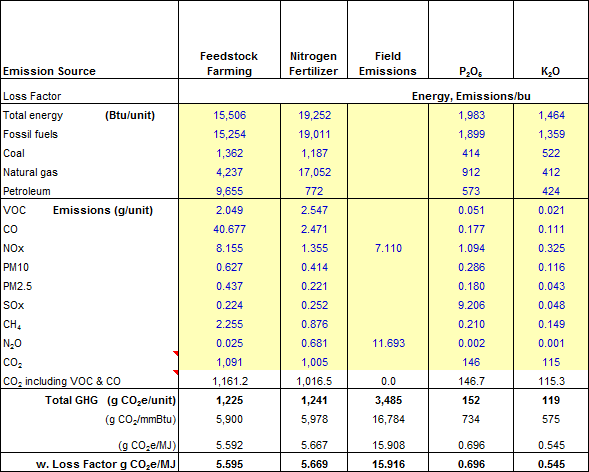
The CA-GREET model is a California-specific version of Argonne National Laboratory’s GREET life cycle model which is used to calculate GHG emissions under the California Low Carbon Fuel Standard (LCFS). Life Cycle Associates developed the original model for the California Air Resources Board (ARB) based on GREET version 1.8b.
In early 2019, the ARB replaced CA-GREET 2.0 with the CA-GREET 3.0 model and Tier 1 Simplified CI Calculators. The new version has both Tier 1 and Tier 2 fuel pathways in the same file and additionally has Tier 1 simplified CI calculators for some specific pathways.
- CA-GREET 3.0 – Tier 1: For commercially produced first-generation fuels
Corn-, sorghum-, and sugar-based ethanol, biodiesel, renewable diesel, CNG, LNG, and biomethane
- CA-GREET 3.0 – Tier 2: For next-generation fuels
Cellulosic alcohols, hydrogen, electricity, drop-in fuels, and innovative production methods

Key differences between CA_GREET and the default GREET model
- CA_GREET is configured with criteria pollutant emission factors that reflect California emission standards and emission policies.
- CA_GREET has a regional lookup table with regional inputs that allows a user to select from eight regions in a pull-down menu, representing feedstock and fuel regions involved in the production of California fuels, and California-specific input parameters rather than U.S. average parameters.
- CA_GREET includes new fuel pathways based on the existing GREET structure. The model is configured for CNG and LNG from dairy digester gas and landfill gas, respectively. The model is also configured for waste cooking oil and tallow pathways. The model is not populated with all of the inputs for numerous sub-pathways such as corn and sugar cane ethanol. Developing additional sub-pathway inputs still require user modifications.
Using CA-GREET
CA-GREET calculations are contained in a spreadsheet, which is publicly available and not user-protected. The user can download the spreadsheet, modify any of the inputs, or formulate and observe the effects on the results and intermediate calculations. The CA-GREET fuel sheets follow the same spreadsheet structure as the original GREET model.
The inventory data contained in the CA-GREET model is derived from many sources, including the set of California Energy Commission documents in support of AB1007. Additional GREET data is derived from Argonne National Laboratory publications, the U.S. Department of Energy (DOE) Energy Information Administration (EIA), and the U.S. Environmental Protection Agency (EPA). The CI varies for different natural gas pathways.

Fuel pathway calculations using CA-GREET
The California Air Resources Board has released fuel pathway documents for the LCFS that describe fuel pathway inputs, calculations, and results from the CA-GREET model in some detail, and are available on the ARB website. The fuel pathway documents (one per pathway) detail all of the assumptions and calculations for the fuel pathway. The results are disaggregated by pathway step. Fuel developers are expected to provide a comparable level of detail for Method 2B calculations under the LCFS.
We also develop custom overlays to the CA-GREET model that allow for the preparation of fuel pathway calculations for the California Low Carbon Fuel Standard. Having developed the model modifications, we can navigate through the model to extract calculation results of interest in any application. The table below shows the disaggregated emissions for some of the farming emissions for a corn ethanol plant. Disaggregating the model results to this level of detail enables more effective reporting and error checking.

Follow the ongoing evolution of commentary regarding GREET and CA_GREET
The GREET model results depend on both the inputs and the modeling calculations. The approach to co-products and distribution of energy inputs and emissions to different fuel types are important modeling parameters in the model.
In late 2023, CARB staff posted LCFS regulatory documents that include a proposed CA-GREET4.0 model, proposed Tier 1 simplified calculators, and proposed look up table changes. The changes staff made in converting Argonne GREET1 2022 into CA-GREET 4.0 are documented here:
> December 19, 2023: CA-GREET 4.0 Supplemental Document and Tables of Proposed Changes
